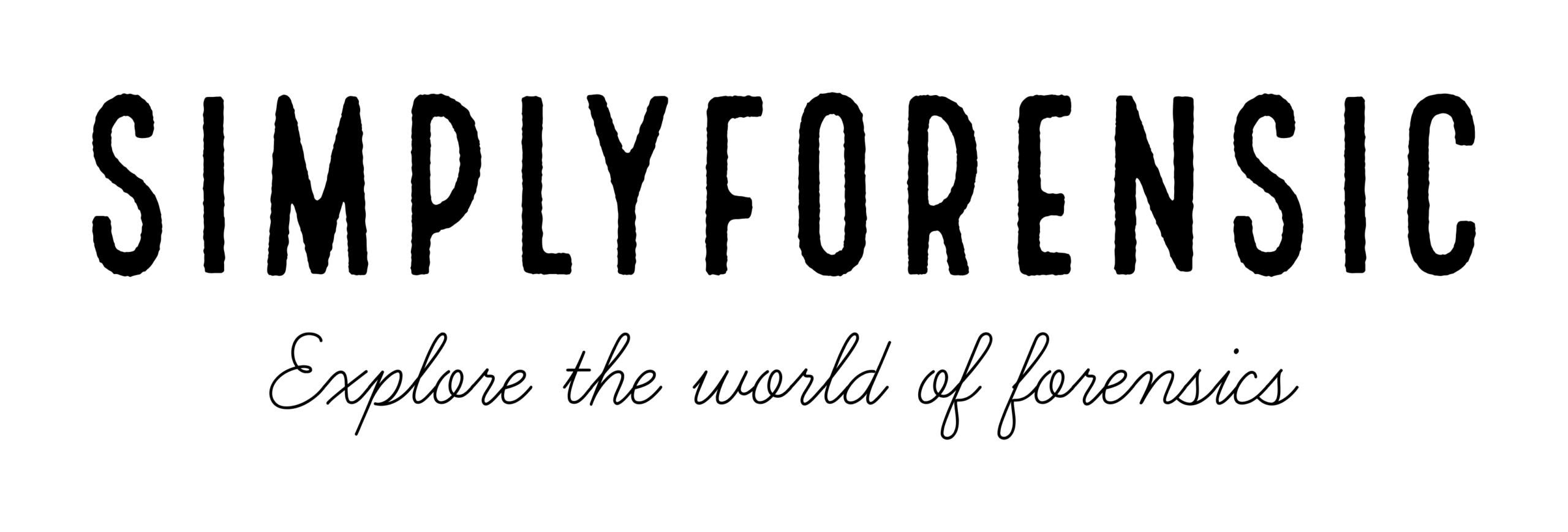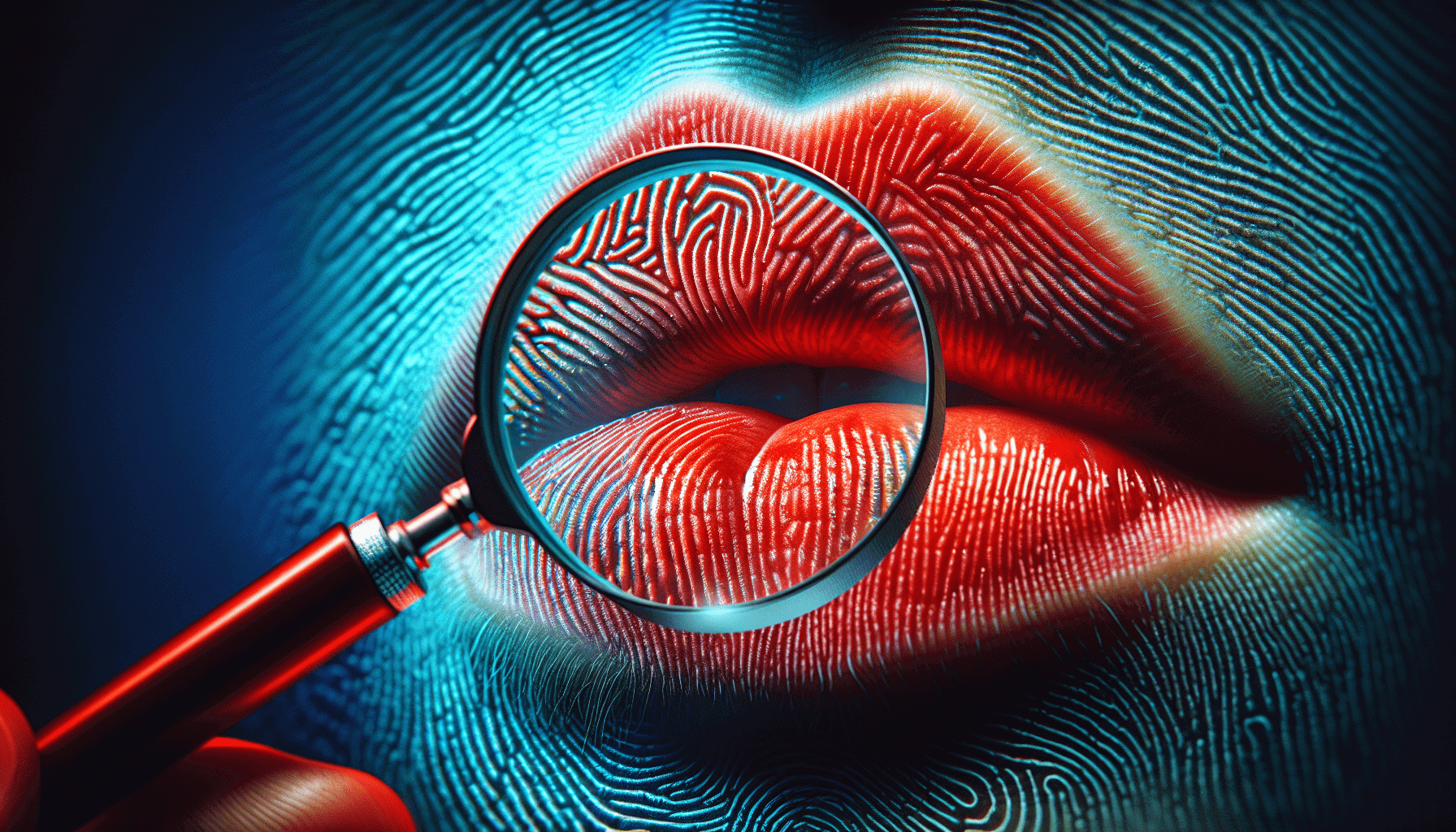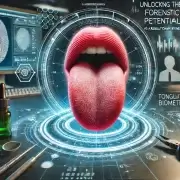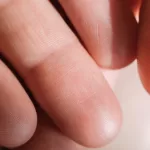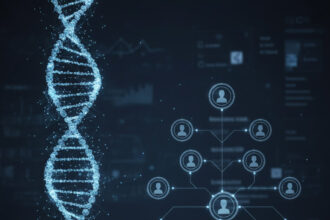Introduction
In the realm of forensic science Discover the fascinating field of Forensic Science, the application of scientific principles to legal matters. This post delves into its many disciplines, from DNA analysis to crime scene investigation, its importance in the justice system, Read Full Definition, lip prints forensics has emerged as a fascinating field, offering unique insights into personal identification. Derived from the Greek word “cheilos,” meaning lips, cheiloscopy focuses on identifying individuals based on lip traces. Cheiloscopy, the scientific examination of lip prints, has gained traction in criminal investigations due to the distinctiveness of lip anatomy and patterns. Much like fingerprintsFingerprint, impression made by the papillary ridges on the ends of the fingers and thumbs. Fingerprints afford an infallible means of personal identification, because the ridge arrangement on every finger of every human being is Read Full Definition, lip prints are believed to be unique to each individual, making them a valuable form of evidence
Discover the fascinating field of Forensic Science, the application of scientific principles to legal matters. This post delves into its many disciplines, from DNA analysis to crime scene investigation, its importance in the justice system, Read Full Definition, lip prints forensics has emerged as a fascinating field, offering unique insights into personal identification. Derived from the Greek word “cheilos,” meaning lips, cheiloscopy focuses on identifying individuals based on lip traces. Cheiloscopy, the scientific examination of lip prints, has gained traction in criminal investigations due to the distinctiveness of lip anatomy and patterns. Much like fingerprintsFingerprint, impression made by the papillary ridges on the ends of the fingers and thumbs. Fingerprints afford an infallible means of personal identification, because the ridge arrangement on every finger of every human being is Read Full Definition, lip prints are believed to be unique to each individual, making them a valuable form of evidence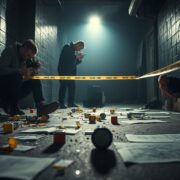 Evidence is any form of proof, such as objects, materials, or scientific findings, presented to establish or disprove a fact in a legal proceeding. It is used to reconstruct events and link or exclude individuals Read Full Definition in both civil and criminal cases.
Evidence is any form of proof, such as objects, materials, or scientific findings, presented to establish or disprove a fact in a legal proceeding. It is used to reconstruct events and link or exclude individuals Read Full Definition in both civil and criminal cases.
- Introduction
- The History of Cheiloscopy
- The Science Behind Lip Prints
- Applications in Forensic Investigations
- Classification of Lip Print Patterns
- Lip Print Analysis Techniques in Forensics
- Collection and Preservation of Lip Prints
- Visible Prints
- Latent Prints – Techniques for Developing Lip Prints
- 3D Prints
- Proper Documentation Techniques
- Analysis and Comparison of Lip Prints
- Challenges and Limitations of Cheiloscopy
- Conclusion
Lip prints can be found on various surfaces such as tape, glasses, cigarette butts, and windows, providing critical clues in crime scene investigations. However, the use of lip prints in legal proceedings is still limited, as the credibility of cheiloscopy is being established in the court system.
This article explores the history, science, classification systems, and challenges surrounding lip prints forensics. By understanding the development and applications of cheiloscopy, forensic students and professionals can appreciate its growing importance in the world of forensic science.
The History of Cheiloscopy
Early Discoveries
The concept of lip prints, or cheiloscopy, was first described in 1902 by R. Fischer, who identified the biological patterns on human lips. In 1932, Edmond Locard, known as the “Sherlock Holmes of France,” suggested that these patterns could serve as reliable identifiers in criminal investigations.
Development as a Forensic Tool
The first significant practical application of lip prints in forensics was proposed by Le Moyne Snyder in the 1950s. In 1961, lip traces were successfully used in a criminal case in Hungary, marking a breakthrough for cheiloscopy in forensic science. Notably, Dr. Martins Santos introduced a classification system for lip prints in 1960, and extensive research by Japanese scientists further solidified the field.
Yasuo Tsuchihashi and Kazuo Suzuki made groundbreaking contributions in 1971 when they divided lips into four quadrants and classified six distinct types of grooves. Their research demonstrated that no two lip prints were identical, even among identical twins, thus establishing the uniqueness of lip prints.
The period from 2000 to 2010 saw numerous studies conducted in India and other countries, exploring various aspects of lip prints including stability, sex determination, and morphological patterns. These studies corroborated the Japanese research, further validating cheiloscopy as an auxiliary method of identification in forensic science.
The Science Behind Lip Prints
Lip Anatomy and Physiology
The lips are complex structures with various functions, including speech, eating, and sensory perception. They consist of two fleshy folds surrounding the oral cavity and are lined by a layer of skin on the outside and mucosa on the inside. The vermilion border, the reddish zone between the skin and mucosa, features distinct wrinkles and grooves that form unique patterns.
Lip prints are formed as early as the sixth week of intrauterine life and remain largely unchanged throughout a person’s lifetime. The labial mucosa contains minor salivary and sebaceous glands, making it possible to leave latent lip prints on objects like glass, paper, or plastic.
Lip Print Patterns and Uniqueness
Lip prints, like fingerprints, are unique to each individual and remain stable over time. Even in cases of trauma or illness, the original pattern of lip prints typically returns. The uniqueness of lip prints makes them a valuable tool for personal identification in forensic investigations.
Several factors influence lip print patterns:
- Genetics: Family members may share some similar grooves, but overall patterns are distinct.
- Lip Thickness: Lips can be classified into four categories—thin, medium, thick, and mixed.
- Lip Position: Lips can be positioned horizontally, elevated, or depressed.
Lip prints are considered analogous to fingerprints in their uniqueness and permanence. Key characteristics include:
- Unchanging nature: Lip print patterns remain stable throughout an individual’s lifetime .
- Resistance to alterations: Even after minor trauma, inflammation, or diseases, lip prints recover and resume their original pattern.
- Individual variation: No two lip prints are identical, with differences in number, length, thickness, and branching of grooves.
These properties make lip prints a valuable tool in forensic investigations, offering potential for personal identification in both civil and criminal cases.
Applications in Forensic Investigations
Crime Scene Evidence
Lip prints can be found on a wide range of surfaces at crime scenes, including glasses, cigarette butts, cutlery, and windows. These prints can be either visible due to substances like lipstick or latent due to natural secretions from the lips. In cases such as sexual assaults, burglaries, and murders, lip prints provide crucial evidence linking suspects to crime scenes.
Personal Identification
The permanence and uniqueness of lip prints make them effective for personal identification. Just like fingerprints, lip prints can be used to confirm a person’s presence at a crime scene, contributing significantly to criminal investigations.
Gender Determination
Cheiloscopy has also proven effective for gender determination. Research has shown that certain lip print patterns are more common in males or females. For example:
- Type I and Type I′ patterns are more prevalent in females.
- Type II patterns dominate in males.
Studies have demonstrated that around 81% of lip prints can be accurately identified by gender, further enhancing the forensic value of cheiloscopy.
Classification of Lip Print Patterns
Several classification systems have been developed to categorize lip print patterns:
- Santos Classification (1967): Divides lip grooves into four types – straight line, curved line, angled line, and sine-shaped line.
- Modified Classification by Nagasupriya et al.: Simplifies the categories into three types:
- Type I: Vertical pattern (full or partial)
- Type II: Branched pattern
- Type III: Reticular pattern (intersecting or crisscrossing)
- Suzuki and Tsuchihashi Classification (1970): The most widely used classification system for lip prints was developed by Suzuki and Tsuchihashi in 1970 . This system categorizes lip prints into six types:
- Type I: Clear-cut vertical grooves running across the lip
- Type I′: Partial-length grooves of Type I
- Type II: Branched grooves
- Type III: Intersected grooves
- Type IV: Reticular patterns
- Type V: Other patterns that cannot be differentiated morphologically.

Studies have shown that certain patterns are more prevalent in specific genders. For instance, Types I, I′, and II are more commonly observed in females, while Type III is more frequently seen in males. The predominant patterns across various studies have been vertical and branched.
Understanding these patterns and their classifications has significant implications for forensic science, as lip prints can be used to confirm the involvement of a person in a criminal act.
Recent studies have suggested modifications to this classification to enhance its precision and accuracyIn scientific and measurement contexts, "accuracy" refers to the degree of proximity or closeness between a measured value and the true or actual value of the measured quantity. Accuracy indicates how well a measurement reflects Read Full Definition. For instance, Type I’ can be further divided into Type I’A (grooves from outer to inner lip) and Type I’B (grooves from inner to outer lip). Similarly, Type II can be subcategorized into Type IIA (outward bifurcation) and Type IIB (inward bifurcation).
Comparison with Fingerprint Classification
Lip print classification shares similarities with fingerprint classification. While lip prints are categorized based on groove patterns, fingerprints are classified according to Kucken’s system into three main categories: loop pattern, arch pattern, and whorl pattern. Both systems rely on unique physiological features for individual identification, underlining their importance in forensic investigations.
Lip Print Analysis Techniques in Forensics
Crime Scene Collection
Lip prints can be found on various surfaces at crime scenes, including cutlery, crockery, windows, doors, plastic bags, and cigarette ends. These prints are particularly valuable in cases of murders, rapes, and burglaries. Investigators should look for lip traces on items such as glasses, cups, and napkins, as perpetrators may overlook these objects when attempting to eliminate evidence.
Laboratory Examination
In the laboratory, various techniques are employed to develop and analyze lip prints. Powders such as aluminum, silver metallic, and plumb carbonate are commonly used for latent print development. Chemical methods, including iodine fuming and silver nitrate, can be effective on certain surfaces. Lysochrome dyes like Sudan Black have shown promise in enhancing lip print quality, especially for prints from long-lasting lipsticks.
Comparison with Known Samples
Comparison of lip prints involves analyzing patterns, individual line features, thickness, length, branching, position, and print outline. Digital analysis using software like Adobe Photoshop has revolutionized the field, allowing for detailed examination and enhancement of images. The high percentage of matching lip patterns obtained from objects with subject patterns supports the forensic implications of cheiloscopy.
Collection and Preservation of Lip Prints
The collection and preservation of lip prints play a crucial role in forensic investigations. These prints can be categorized into three main types: visible, latent, and 3D prints, each requiring specific techniques for collection and preservation.
Visible Prints
Visible prints are those that can be seen with the naked eye. These prints are often left by substances like lipstick or blood on surfaces. To collect visible prints, investigators can directly photograph them, preferably using a scale for reference. For prints on non-porous flat surfaces like mirrors, they can be photographed, enlarged, and overlay tracings made of the grooves.
Latent Prints – Techniques for Developing Lip Prints
Latent prints are invisible to the naked eye and require development for visualization. These are common due to the increased use of transfer-resistant lipsticks or when no lipstick is worn. To collect latent prints, various methods can be employed:
Powder Methods
Powder methods are commonly used to develop latent lip prints on non-porous surfaces such as glass, marble, metal, plastic, and finished wood. These techniques involve applying finely divided powder particles that adhere to the moisture and sebum components in the latent printLatent print - A fingerprint, palm print or footprint that is not readily visible under normal lighting. Read Full Definition residue. Various powders are employed, including aluminum powder, silver metallic powder, and plumb carbonate (white powder). The development process entails dusting the latent print with powder using a magnet for magnetic powder or a bristle brush for other types, followed by lifting the print with an appropriate adhesive tape.
Studies have shown that aluminum, magnetic, and cobalt oxide powders can effectively enhance latent lip prints on non-porous surfaces, with identifiable prints obtained even after 30 days. However, conventional powder techniques may not be suitable for processing lip prints, as the brushes used can smear and leave streak marks that may falsely contribute to individual characterization.
Chemical Methods
Chemical techniques rely on the biochemical reaction of lipid residues deposited on surfaces with specific chemical agents . Some commonly used chemical methods include:
- Iodine fuming: This method requires quick photography as the print fades rapidly.
- Silver nitrate: Effective for developing impressions on cardboard and paper-like surfaces.
- Ninhydrin: Reacts with oils in the prints to create a purple print, similar to fingerprint development .
Lysochrome dyes, such as Sudan III, Sudan Black, and Oil Red O, have shown effectiveness in developing new and old lip prints from long-lasting lipsticks on various substrates. Studies have demonstrated that Sudan Black performs better than Oil Red O and Sudan III in enhancing lip print quality, although the pattern quality is substrate-dependent and decreases with increasing print age.
Specialized Techniques for Different Surfaces
For multi-colored surfaces, specialized techniques have been developed:
- Sudan black reagent: Can be applied directly to the film.
- Yellow fluorescent powder: Enhances visibility on dark backgrounds.
- Nile red reagent: Effective for developing prints on various surfaces.
Research on atypical surfaces, such as metallic straws, has shown that white volcano powder is most effective in lip print development, followed by fluorescent powder and Silk Black volcano powder . Additionally, natural dyes like vermilion and indigo have demonstrated enhancement efficiency comparable to lysochrome dyes on different substrates, including cups, satin fabric, and cotton fabric .
- Powder Method: Using conventional fingerprint developing powder or a Magna brush with magnetic powder to dust the surface.
- Chemical Enhancement: Applying reagents like ninhydrin or iodine fuming to react with lipids and other components of lip prints.
- Fluorescent Techniques: Using fluorescent dyes or powders to enhance visibility under specific light wavelengths.
3D Prints
3D or plastic prints are found on soft, gel-like surfaces such as butter or wax. While visible to the naked eye, they may require additional development for photography.
Proper Documentation Techniques
Proper documentation is crucial for preserving lip print evidence. Some techniques include:
- Using a roller fingerprinter with special paper applied directly to the lips.
- Applying lipstick or other suitable transfer mediums to the lips and pressing them against paper or cellophane tape .
- Using the Scotch tape method, which provides clear and definable lip print images.
For all types of prints, it’s essential to photograph the suspect’s lips for comparison. The collection process should be meticulous, as lip prints can vary in appearance depending on pressure, direction, and method used .
Analysis and Comparison of Lip Prints
The analysis and comparison of lip prints play a crucial role in forensic investigations. Various methods and techniques have been developed to examine, analyze, and match lip prints effectively.
Examination Methods
Traditional examination methods involve visual inspection of lip prints using magnifying lenses. However, recent advancements have introduced more sophisticated techniques. Latent lip prints, which are invisible to the naked eye, can be developed using fingerprint powders such as black powder, gray powder, and lysochrome dyes like Sudan III and Sudan black. These methods enhance the visibility of lip prints on various surfaces, including glasses, cups, and tissue paper.
Digital Analysis
Digital analysis has revolutionized the field of cheiloscopy. Adobe Photoshop, a popular software program, offers a multitude of imaging features for enhancing and analyzing lip prints. The digital method provides several advantages:
- Zooming: The initial working image can be enlarged using the zoom tool, allowing for detailed examination.
- Enhancement: Brightness and contrast can be adjusted to improve image quality.
- Layers: Multiple elements can be worked on separately without disturbing others.
- Drawing tools: Resolution-independent vector shapes can be drawn for precise"Precise" refers to the degree of closeness or consistency between multiple measurements or values taken under the same conditions. It indicates how well these measurements agree with each other, regardless of whether they are accurate Read Full Definition analysis.
Digital photography has emerged as a modern alternative to traditional lip print recording methods. It allows for high-resolution image capture, preserving finer lip patterns and details. This method has shown promise in terms of accuracy and efficiency in recording lip prints.
Matching Criteria
The matching of lip prints involves comparing the overall pattern and individual features. Tsuchihashi’s classification system is commonly used for analyzing lip prints. However, with the advent of digital photography, there is a need for a new classification system that can accommodate the ultrafine details captured.
Matching criteria include:
- Overall pattern analysis
- Individual features of the lines
- Thickness and length of lines
- Branching patterns
- Position and print outline
- Combination of features
In cases where prints are inappropriate or unclear, forensic experts can search for the material configuration by which the print was produced or extract DNA to relate the suspect to the crime scene.
Challenges and Limitations of Cheiloscopy
Variability factors
Lip print patterns can vary due to several factors. The mobile nature of lips can lead to different prints depending on pressure, direction, and recording method. Factors like thin lips, recessive lips, and excessive lip curvature can affect print quality. Excessive lipstick application or variations in pressure during recording can cause image distortion. Injuries to the lips may temporarily or permanently alter patterns, though the long-term effects of scarring on lip prints require further investigation.
Admissibility in court
Despite the potential of cheiloscopy, its use in criminal cases remains limited due to lack of established credibility in court systems. However, some progress has been made. In 1999, an Illinois appellate court accepted expert testimony on lip print identification, recognizing it as a generally acceptable means of positive identification within the forensic science community.
Need for standardization
To enhance the reliability of cheiloscopy, there is a pressing need for standardization. A uniform procedure for collection, development, and recording of lip prints, as well as subsequent comparison, must be developed. Additionally, further studies involving larger sample sizes, diverse populations, and improved methodologies are necessary to address current limitations and strengthen the scientific foundation of cheiloscopy.
Conclusion
Lip prints forensics has emerged as a fascinating field in criminal investigations, offering unique insights into personal identification. The science of cheiloscopy has shown promise in providing valuable evidence at crime scenes, especially when other forms of evidence are lacking. Its applications range from crime scene analysis to gender determination, showcasing its potential to revolutionize forensic science. However, challenges remain in terms of variability factors and standardization, highlighting the need for further research to enhance its reliability.
To wrap up, the future of cheiloscopy looks promising, with ongoing advancements in digital analysis and chemical development techniques. As researchers continue to explore its potential, lip prints forensics may soon become a widely accepted tool in criminal investigations. However, to achieve this goal, there’s a need to address current limitations and strengthen its scientific foundation. With continued research and standardization efforts, cheiloscopy could play a crucial role in solving complex criminal cases and advancing the field of forensic science.
What is Cheiloscopy and why is it important in forensic science?
Cheiloscopy is the scientific study of lip prints. It plays a crucial role in forensic science as it aids in personal identification in criminal and civil cases. Lip prints are unique to each individual, similar to fingerprints, making them valuable evidence in crime scene investigations.
How are lip prints used in criminal investigations?
Lip prints can provide valuable evidence in crime scenes, especially when other forms of evidence, such as fingerprints, are lacking. They can be found on various surfaces, including tape, glasses, cigarette butts, and windows. The distinct patterns of lip prints can help in identifying individuals involved in a crime.
What are the challenges faced in using lip prints in criminal cases?
The use of lip prints in criminal cases remains limited due to the ongoing establishment of their credibility in the court system. Variability factors such as pressure, direction, recording method, lip thickness, and lip position can affect the quality of lip prints. There is also a need for standardization in the collection, development, and recording of lip prints.

